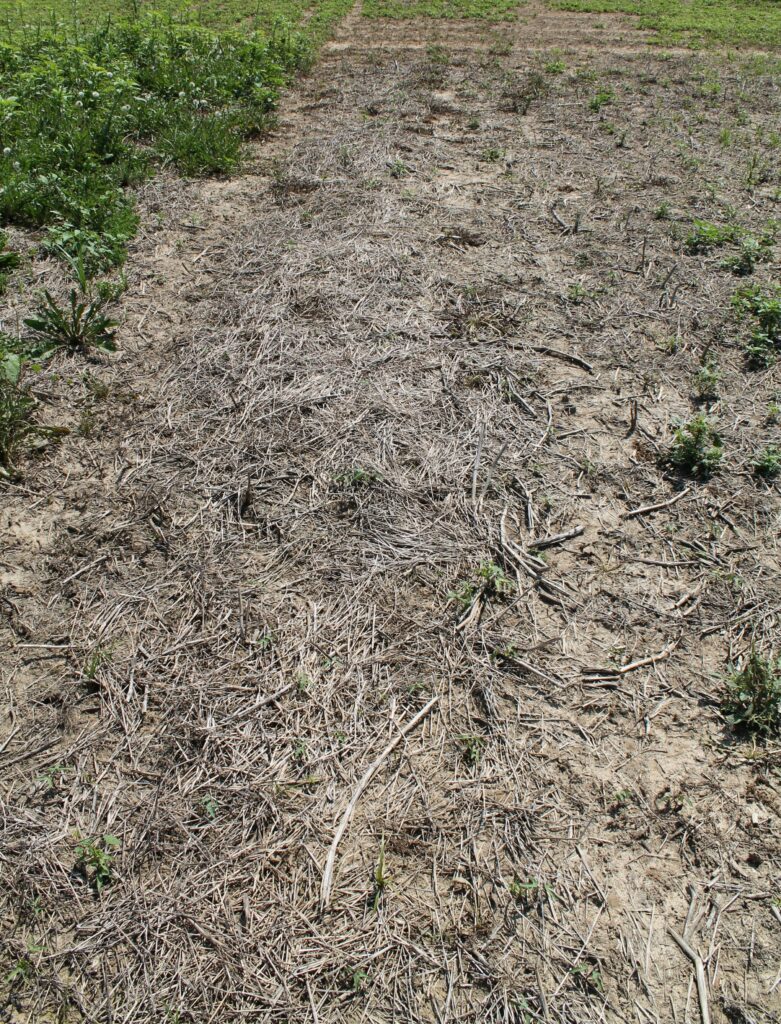In fields where dicamba and 2,4-D are no longer effectively controlling Palmer amaranth what are some options to help manage this weed? We conducted research at several locations this year trying to answer this question.

The most consistent Palmer amaranth control in locations where dicamba provided poor control (46%) was dicamba + glyphosate followed 7 days later by Liberty (94%). Where those same two applications were spaced out 21 days apart the control fell to 89%. Those sequential applications provided more consistent control across the locations as well as in most farmer fields we have visited. Where two dicamba + glyphosate applications were applied 7 or 21 days apart, control ranged from 58% to 88% (Picture 1 and 2). It seems that the success of that method depends less upon the timing and more upon the relative dicamba resistance level of the Palmer amaranth population in the field.

The most consistent Palmer amaranth control in locations where Enlist One provided poor control (40%) was actually two different treatments. The first was a tankmix of Liberty and Enlist One (89%). The second was Enlist One followed 7 days later with Liberty (95%). As with the sequential dicamba applications, where Enlist One was followed by Enlist One 7 days later, Palmer amaranth control varied considerably (50 to 82%).
These results would indicate that though dicamba and 2,4-D are no longer providing good control they do stress the auxin-resistant Palmer amaranth enough to make them susceptible to Liberty for a longer window of time.

